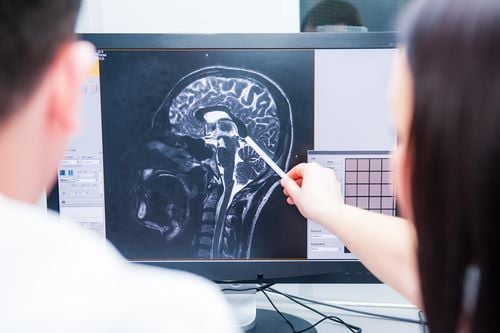Airbags are a vital safety feature in modern cars, designed to protect drivers and passengers in a crash. The airbag system rapidly deploys during vehicle collisions to create a protective barrier for occupants, complementing seat belts and minimizing injury risks. They have saved many lives and reduced the risk of fatal injuries in car accidents, but airbags can also cause injuries when they deploy. Knowing the types of injuries that can occur from airbag deployment is important for drivers and passengers. These can be minor scratches to more serious conditions like broken bones, head trauma, or spinal injuries.
If you have been in a car accident and think you have an airbag injury, you need to get medical attention right away. An Atlanta car accident doctor can give you a full evaluation and the treatment you need to get better. In this blog we will go over common airbag injuries, how they happen, and what to do if you find yourself in this situation.
Types of Airbag Injuries
Airbags are designed to protect vehicle occupants during crashes, but they can also cause significant neck and spinal injuries. Understanding these airbag injuries can help you recognize symptoms and seek appropriate medical attention.
Facial Injuries
Facial injuries are the most common when airbags deploy. The force of the airbag can cause:
- Abrasions: Minor scratches on the skin.
- Lacerations: Deeper cuts especially around the eyes and mouth.
- Fractures: Bones in the face like the nose or cheekbones can break on impact.
- Broken Bones: In severe cases, the impact can cause more extensive facial injuries.
Chest Injuries
Chest injuries can also occur from airbag deployment. These are:
- Broken Ribs: The sudden inflation can cause fractures in the rib cage.
- Internal Injuries: Organs can be damaged and need immediate medical attention.
Neck and Spine Injuries
The neck and spine are most vulnerable in a crash, often resulting in severe neck and spinal injuries. These can include:
- Whiplash: A common injury from the rapid back-and-forth motion of the neck.
- Spinal Fractures: The force of the airbag can cause significant damage to the spine.
- Cervical Spine Traumas: Injuries to the neck vertebrae can lead to serious complications.
Soft Tissue Injuries
Soft tissue injuries can occur from the impact of the airbag. These can be:
- Muscle Damage: Strains or tears in the chest or neck.
- Tendon Damage: Tendons can be stretched or torn in the crash.
- Ligament Damage: Ligaments can be injured and affect joint stability.
Traumatic Brain Injuries
Airbags can also cause traumatic brain injuries. These can be:
- Concussions: A common brain injury from sudden movement.
- Head Trauma: A more severe impact can cause more serious brain injuries and need urgent care.
Airbag Injuries Causes
Airbag injuries can come from various causes: Faulty airbags, such as those involved in the Takata airbag recall, pose serious risks and can lead to severe injuries or fatalities.
Defective Airbags
Faulty airbags can cause serious injuries in a crash due to their potential to malfunction, leading to severe harm or fatalities. When an airbag doesn’t deploy or deploys incorrectly it can leave drivers and passengers more exposed. For example, a faulty airbag may not provide enough cushioning and cause a more severe impact. This is often due to manufacturing errors or poor quality control.
Faulty Crash Sensors
Crash sensors are crucial in determining when airbags should be deployed. If these sensors malfunction they may not activate the airbags in a crash. Unprotected occupants can suffer serious injuries. Knowing how these sensors work can help you understand the risks.
Malfunctioning Airbags
Airbags can malfunction even if they are not defective. This can be due to electrical issues or wear and tear over time. A malfunctioning airbag can deploy unexpectedly or not at all and leave vehicle occupants exposed to harm. Regular maintenance checks can help identify problems before they cause accidents.
Improper Seatbelt Use
Wearing a seatbelt is key to safety, especially when airbags deploy, as seat belts and airbags work together to enhance passenger safety during a collision. However improper seatbelt use can increase the risk of injury. For example, if a seatbelt is too loose or worn out, it may not hold the occupant secure during a crash. This can cause injuries that airbags alone can’t prevent.
Airbag Proximity
The distance between an occupant and the airbag can make a big difference in the severity of the injury. Sitting too close to the airbag can cause more severe injury upon deployment. Drivers and front seat passengers should keep a safe distance from the steering wheel and dashboard to minimize the risks.
Airbag Injuries Symptoms
Airbag deployment can cause many injuries. Knowing the symptoms is important for timely treatment and recovery. Here are the common signs to look out for after an airbag deploys.
Facial Redness, Swelling, Abrasions
After an airbag deploys the force can cause facial injuries. You may see redness or swelling on your face. Abrasions can also occur if your face hits the airbag. These can be painful and may need medical attention.
Eye Irritation and Vision Changes
Airbags release chemicals and dust upon deployment. This can cause eye irritation and discomfort. Some may experience temporary vision changes. If you see any vision problems get medical help.
Neck Stiffness and Limited Mobility
Whiplash is a common airbag injury. You may feel a stiff neck and can’t move it. This symptom may indicate a more serious injury and needs to be checked by a doctor.
Chest Pain and Discomfort
The airbag impact can cause chest pain. This can be mild to severe. Monitor this symptom as it may be a sign of internal injuries or broken ribs. Get medical help immediately if you have chest pain.
Dizziness, Confusion, Headaches
Some may experience dizziness or confusion after an airbag deploys. Persistent headaches can also occur. These symptoms may be a sign of concussion or brain injuries. If you experience these get medical help ASAP.
Prevention and Safety
Airbag injuries can be serious. Airbags reduce driver fatalities by serving as inflatable safety devices that protect vehicle occupants from striking the interior during a collision, dramatically lowering the number of deaths and injuries in car accidents, according to the National Highway Traffic Safety Administration. But there are ways to minimize your risk. Knowing these is key to your safety.
Proper Seating Position
Sit up straight. This position allows the airbag to deploy correctly and can reduce injury. Adjust your seat so your back is against it. Proper posture is key to protecting your body in a crash.
Seatbelts
Always wear seat belts. Seat belts are your first line of defense in a crash, working together with airbags to enhance passenger safety. They complement airbags by providing additional protection, and the deployment of airbags is influenced by whether occupants are wearing seat belts, which affects the threshold for airbag activation. Drivers and passengers should wear seat belts at all times.
No Objects Between the Seatbelt and Body
Clear the area around your seat. Objects can hinder the seatbelt’s effectiveness. If something is between your body and the seatbelt it can cause more injury in a crash.
At Least 10 Inches from the Steering Wheel
Keep a safe distance from the steering wheel. Ideally 10 inches or more. This distance allows the airbag to deploy without hitting your face or upper body. It also gives you better control of the vehicle.
Medical Treatment and Compensation
After airbag injuries, get medical help ASAP. Early diagnosis and treatment make a big difference. Airbag injuries can be minor to severe. So even if you feel fine get a doctor. Symptoms may not show up right away and some injuries can get worse over time.
Documenting Injuries and Evidence
Proper documentation is key to any personal injury claim. Keep detailed records of all medical visits, treatments, and expenses. Take photos of visible airbag injuries and keep copies of medical reports. This will be important when you pursue compensation. Also, gather evidence from the car accident including police reports and witness statements. All this information supports your case and strengthens your position.
Personal Injury Claims Against Airbag and Vehicle Manufacturers
If you’re injured by a defective airbag you may have a personal injury claim. Frontal airbags, which are inflatable cushions designed to protect occupants during a crash, play a crucial role in vehicle safety. This can be against the airbag manufacturer or the vehicle manufacturer. Consult with an Atlanta personal injury attorney to know your rights and the process. They can guide you through the steps to get compensation for medical bills, lost wages, and pain and suffering. The road to justice can be tough but with expert help it’s manageable.
Seek Treatment From an Experienced Atlanta Car Accident Doctor ASAP!
If you or a loved one has been involved in a car accident and suffered airbag injuries, it’s crucial to seek medical attention as soon as possible. Airbag injuries can sometimes have delayed symptoms, which, if left untreated, could lead to more serious complications.
Don’t wait until it’s too late—schedule a visit with us at 404-687-9000!









